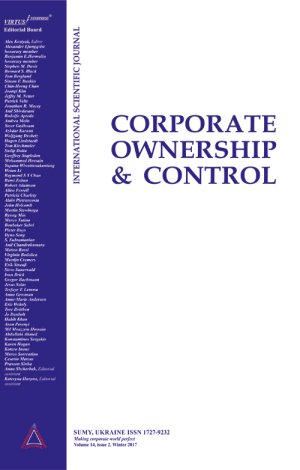
-
 Journal menu
Journal menu

- General information
- Editorial Board and External Reviewers
- Journal Policies
- Publication Ethics and Malpractice Statement
- Instructions for authors
- Paper reviewing
- Article processing charge
- Feedback from stakeholders
- Journal’s Open Access statement
- Order hard copies of the journal
- 50 most cited papers in the journal
OWNERSHIP STRUCTURE AND FIRM PERFORMANCE: A LONGITUDINAL STUDY IN MALAYSIA
Download This ArticleAbstract
Highly concentrated ownership structure is a common feature in most developing countries including Malaysia. Such feature contributed to a significant decline in many performance indicators during the Asian financial crisis 1997/98. The main purpose of this paper is to explore developments in ownership structure and firm performance of Malaysian listed companies and their impact on firm performance. A quantitative approach was adopted to collect secondary data from annual reports of 369 listed Malaysia companies that are exist over the period of 2003 to 2013. In this study ownership structure has been measured using three indicators; the government ownership, local nominee and foreign nominee. While return on asset (ROA) and earnings per share (EPS) were the two criteria used to measure firm performance. The results of the study revealed that there are not much changes in the ownership structure and firm performance in Malaysia over the period of 2002 to 2013. It can be concluded economic development of the country does not much influence the ownership structure of listed companies in Malaysia..
Keywords: Ownership Structure, Firm Performance, Malaysian Listed Companies
How to cite this paper: Abdulsamad, A.O., Wan Yusoff, W.F. (2016). Ownership structure and firm performance: a longitudinal study in Malaysia. Corporate Ownership & Control, 13(2-2), 432-437. https://doi.org/10.22495/cocv13i2c2p3

















